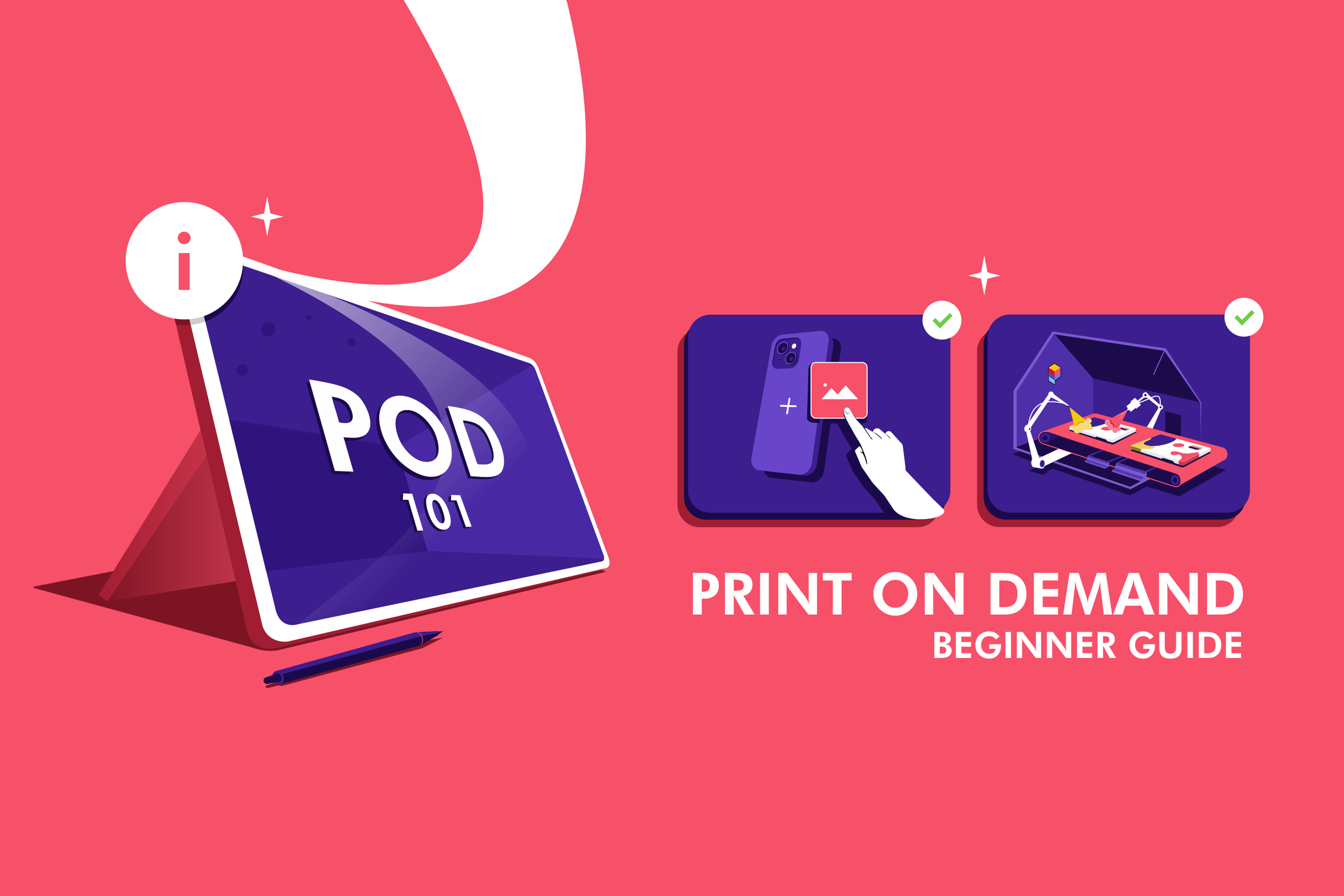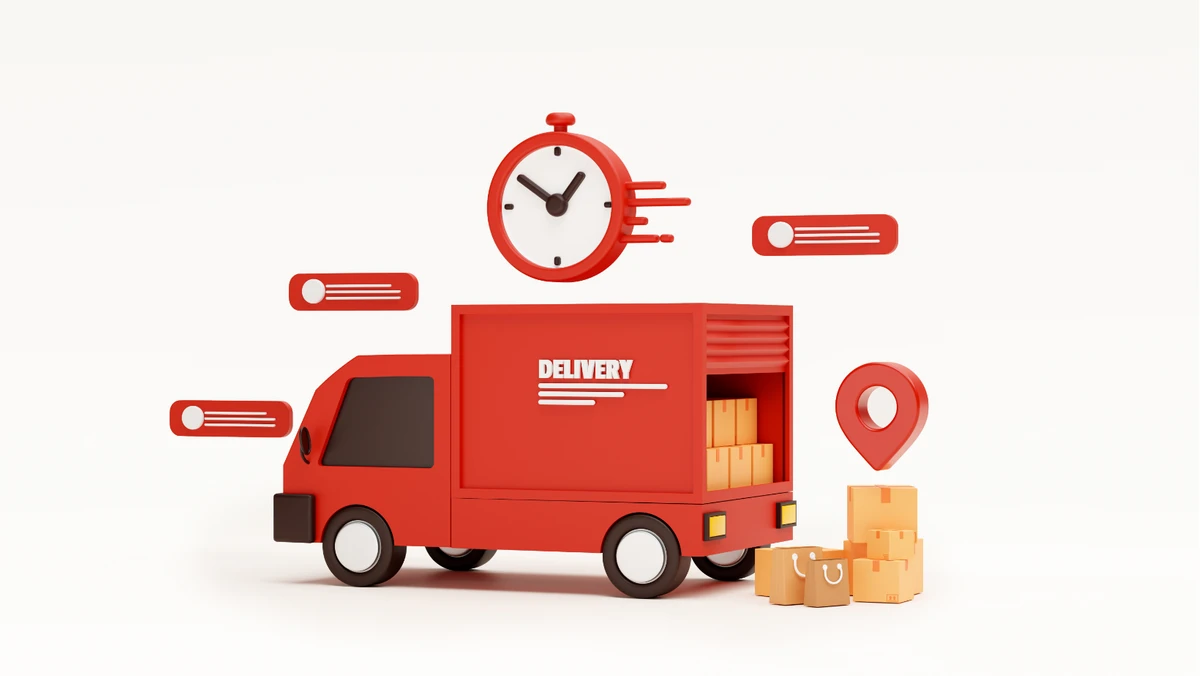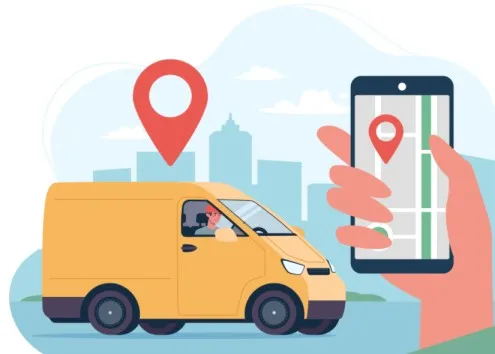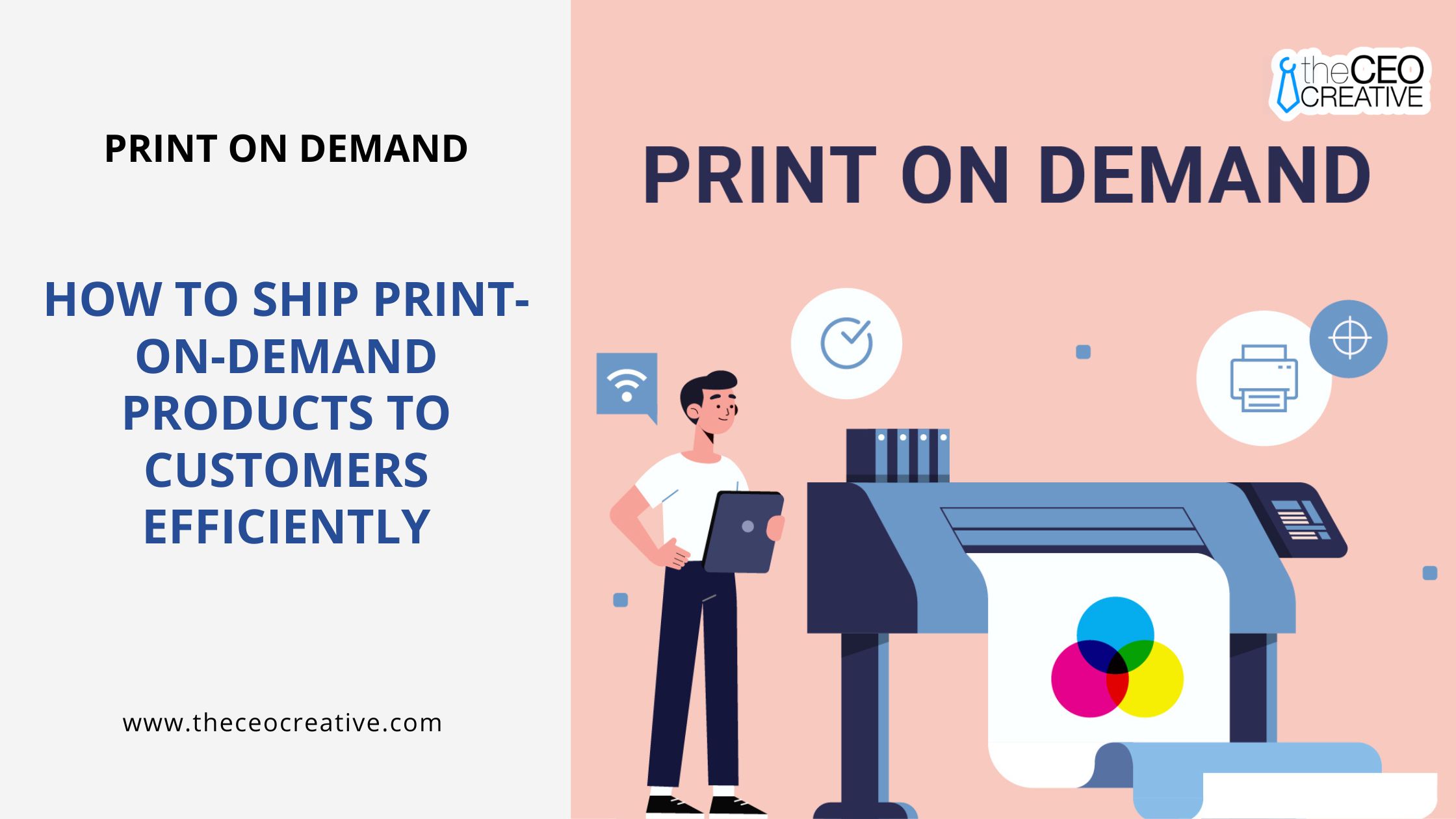Introduction
Stepping into the print-on-demand (POD) scene is a thrilling journey, but making sure your products reach customers without a hitch is crucial for their happiness. As the holidays draw near and online shopping surges, nailing down a seamless shipping plan is vital. Dependable and swift shipping doesn’t just guarantee happy customers; it also brings them back for more. Let’s jump into the must-knows of shipping POD items effectively, ensuring your customers are overjoyed and ready to shop with you again.
Selecting the Right Print-On-Demand Platform

Picking the perfect print-on-demand service is a big deal – it can really make or break how smoothly your orders ship out and how happy your customers are. With so many options out there, you need to find one that’s just right for your business. Let’s dive into how to choose the best fit.
Comparing Popular Platforms
When it comes to print-on-demand services, a few big names stand out: The CEO Creative, Printify, Teespring, and Redbubble. They all have their own pros and cons, so let’s break it down:
– The CEO Creative is a favorite for its top-notch product quality and how smoothly it integrates with your existing setup. They also do warehousing and fulfillment, meaning you can stock your products at their locations and they’ll handle the shipping for you.
– Printify boasts a huge network of suppliers, which translates to a wider selection and often better prices. They’re also smart about where their suppliers are located, which can help get your products to customers faster.
– Teespring is the way to go if you’re into designing custom apparel without wanting to deal with a lot of the behind-the-scenes stuff. They make it easy to create and sell without the hassle of managing the details.
– Redbubble is a bit of a different beast, catering mostly to independent artists. It’s a great platform for design-focused entrepreneurs who want to tap into specific niche markets.
Ultimately, taking a good look at what each platform offers will help you figure out which one aligns best with your business and who you’re trying to reach.
Key Features to Consider
When you’re checking out print-on-demand services, zero in on the features that really matter for your day-to-day:
– What can you sell? Make sure the platform has a wide selection of products you’re excited to offer. Also, check out how much you can customize them.
– Shipping stuff: You want a platform that does shipping right – reliably and without breaking the bank. And if you need to, see if they ship overseas.
– Tech that plays nice: How well does the platform connect with your current setup, like your online store and payment systems? It should be a breeze to integrate.
– Help when you need it: Things go wrong sometimes, so you need a platform with solid customer support to jump in and fix any production or delivery hiccups quickly.
Getting these features right will make everything run more smoothly and keep your customers happy.
Integrating with Your E-commerce Store
Alright, so you’ve settled on a platform – now comes the part where you hook it up to your online store. Getting these two to work together smoothly is super important for things to run without a hitch and for handling orders like a pro. most print-on-demand services have handy plugins or apps that you can pop right into well-known e-commerce platforms like Shopify, WooCommerce, or Etsy. Here’s the lowdown on making sure everything integrates without a glitch:
– Set Up Automatic Order Handling: Use this connection to make sending orders over to your print-on-demand supplier automatic. This is a real time-saver and cuts down on mistakes, too.
– Keep Your Inventory in Sync: You want to make sure that details like what’s in stock and how much things cost are always up-to-date between your shop and the print-on-demand platform. That way, your customers are always in the know with the right info.
– Stay on Top of Shipping: Take advantage of the tracking tools that come with the integration to keep your customers posted on where their order is, from the moment it leaves until it gets to their doorstep.
Successful integration means less manual work and more time to focus on other business areas, such as marketing or customer engagement.
Optimizing Packaging and Labeling
An often overlooked aspect of shipping is how your product is packaged and labeled. Good packaging and clear labeling contribute to a professional appearance, protect your products during transit, and enhance the overall customer experience.
Choosing Sustainable Packaging Options
Choosing eco-friendly packaging is a great way to both impress your customers and do something nice for the planet. A lot of shoppers really appreciate businesses that care about the environment, and it can give your brand a real boost. Here are some ideas you might like:
– Use Recyclable Stuff: Go for packaging materials like corrugated cardboard or recycled paper, which can easily be recycled once they’ve been used.
– Try Biodegradable Options: Consider using biodegradable packaging, even some plastics that decompose faster and safer in landfills.
– Keep it Simple: Think about using less packaging overall. You can still keep your products safe but reduce waste at the same time by embracing a minimalist style.
Making sustainable choices like these shows you’re serious about caring for the environment, and it’s a smart way to attract customers who are also thinking green.
Printing Professional Labels
Labels are so much more than just simple stickers; they’re a direct reflection of your brand’s identity. Having your labels professionally printed can boost how valuable your products seem and make sure they get where they need to go without a hitch. Here’s the key to nailing it:
– Crystal Clear, Easy-to-Read Printing: Make sure your labels are a breeze to read, with all the must-have shipping details popped out. We’re talking about the customer’s address, where it should go back to, and any special instructions the delivery folks need to know.
– Make it Your Own: Think about slapping your logo or some branded goodness onto those labels to really hammer home your brand and make your parcels pop.
– Barcodes and QR Codes are Your Friends: Get on board with barcodes or QR codes – they’re lifesavers for keeping tabs on things and managing your stock. They’re a doddle to scan at all sorts of points along the delivery journey.
Spending a bit of extra time and cash on getting your labels looking ace will seriously impress your customers and mean fewer delivery disasters.
Ensuring Secure Packaging for Diverse Products
When you’re sending out print-on-demand items, from t-shirts to mugs, it’s super important to pack each one carefully so they don’t get damaged on their way. Here are some suggestions to help you out:
– Pick the Right Box Size: Don’t put small stuff in huge boxes, since they’ll slide around and might get damaged. A box that fits just right will keep things safer.
– Use Padding for Protection: Wrap fragile things like mugs or phone cases in bubble wrap, or use foam inserts or air cushions. This will help absorb any bumps they might get while being shipped.
– Seal with Good Tape: Use strong tape to secure your packages, so the stuff inside stays clean and safe until it gets to your customer.
If you make sure your products are snug in their packaging, you’ll have fewer returns because of damage, and your customers will be happier and more likely to buy from you again.
To wrap things up, fine-tuning your shipping approach – everything from choosing the right platform to nailing the specifics of packaging – can really make or break your success in the print-on-demand world. By being proactive and focusing on every aspect, both major and minor, you’ll be setting yourself up to impress your customers and create a booming, lasting business. Happy shipping!
Streamlining Order Processing

To make sure your print-on-demand products get shipped out efficiently, you really need to nail down how you handle orders. Getting this part of your process running smoothly means your customers receive their items fast and with few, if any, problems. Here are some great tips to speed up your order processing and make it more efficient.
Automating Order Management
Picture this: you start your day, and everything is already in place, your orders are all set and waiting for the next stage, no effort needed on your part. For print-on-demand businesses constantly on the go, automation tools are a complete lifesaver. They’re a big help with:
– Grabbing Orders: Orders from your online shop are automatically brought into your system, so you don’t have to do it yourself.
– Double-Checking Orders: Before anything else happens, these tools make sure all the important information, like where to ship and what the product should look like, is spot on.
– Keeping Customers in the Loop: Your customers get updates on their order, from when it’s being worked on to when it’s shipped, all done automatically.
A great option is to use an e-commerce platform that has automation features already built-in. Another good way is to add automation plugins or software to the system you already use. By automating, you make fewer mistakes, save a ton of time, and can put your energy into other important parts of your business.
Implementing Efficient Inventory Tracking
booming print-on-demand businesses treat their inventory tracking with scientific precision. Although the “print-on-demand” model means products are made only after an order comes in, keeping a close eye on your virtual stock levels offers a lot of benefits:
– Get a feel for what’s hot: By keeping track of your top-selling items, you can make smart guesses about what people will want in the future and make sure you always have enough.
– Know your production limits: Understanding how much your printing partners can realistically handle helps you avoid selling more than you can make or running into unexpected backups.
– Cut down on errors: Staying on top of different product versions, sizes, colors, and personalized choices helps you avoid mistakes that could slow down your shipping.
Make use of inventory management software that works seamlessly with your online store. This creates a constant stream of accurate, up-to-the-minute information. That way, you’ll never be surprised by a sudden rush of orders or be left scrambling when something runs out.
Coordinating with Print Partners
Your print partners are essential to ensuring customer orders are handled promptly and effectively. It’s really important to develop a solid, communicative relationship with them. Here are some things to think about:
– Keep in Regular Contact: Plan to have frequent meetings or calls. Use these to talk about upcoming promotions, prepare for busy periods with increased orders, and address any potential roadblocks.
– Utilize Shared Tools: Consider using project management software or communication platforms that everyone can access. This helps keep everyone on the same page and allows for quick problem-solving.
When you collaborate closely with your print partners, you’ll find that fulfilling orders becomes a much smoother, quicker, and more dependable process.
Choosing the Best Shipping Carriers
Getting your printed items from the printing press to the post office is just as crucial as the printing process itself. Picking the right shipping company can really impact how smoothly your print-on-demand products get delivered. Let’s look at how you can make the best pick.
Evaluating Carrier Reliability and Costs
Shipping is all about reliability. You really want each and every package, no matter its size, to get where it’s going on time and in perfect shape. To make sure that happens, you should think about these things:
– How Fast They Deliver: Check out different shipping companies’ typical delivery speeds and see who actually sticks to their promised delivery dates.
– How Well They Handle Packages: Dig into customer reviews and ratings to find out how well each carrier takes care of packages and how they arrive.
– The Price: You’ve got to find a good mix of reliability and cost, since sometimes the faster shipping options will cost you more.
Also, consider where your customers are located—some shipping companies might be better at delivering to cities, while others are better for rural areas. It’s smart to try out a few options with some test shipments to see which one works best for what you need.
Negotiating Shipping Rates
Negotiating isn’t just something that presidents and prime ministers do; it’s also a handy skill that can help you save money on shipping costs. Here are some tips on how to negotiate:
– Ask about discounts for sending a lot of packages at once: If you regularly ship a large number of packages, talk to the delivery companies about getting lower rates for sending them in bulk.
– Look into loyalty rewards: See if the delivery company can give you some discounts for using them regularly or for promising to use them for a long time.
– Think about getting a package deal: Sometimes, you can save money by getting shipping, insurance, and tracking all from the same company.
And don’t be afraid to show the delivery companies what their competitors are offering. Often, they’ll be happy to lower their prices to keep your business or to get your business if you’re growing.
Offering Multiple Shipping Options for Customers
In the realm of online shopping, being adaptable is crucial. Presenting various delivery choices hands your customers the reins when it comes to receiving their orders, increasing their happiness and potentially increasing your revenue. Take a look at these choices:
– Standard Shipping: Often the most budget-friendly selection, standard shipping can be tossed in without cost for orders exceeding a specific amount, encouraging shoppers to buy more.
– Expedited Shipping: For those customers who are in a hurry, offer faster delivery for an added fee. Giving a projected delivery date helps keep their expectations in check.
– International Shipping: Avoid restricting your potential market. Collaborate with shipping companies well-versed in global shipping and capable of swiftly navigating customs.
Empowering your clientele to select their favored delivery approach elevates their entire purchasing journey. What’s more, content customers are more inclined to come back and spread the word about your store.
Implementing Effective Delivery Tracking

In today’s online shopping world, letting your customers know where their orders are is just as important as how good your products are. Having a really good way to track deliveries can make all the difference for keeping customers happy and getting them to come back. Let’s look at how you can set up a strong delivery tracking system for your print-on-demand store.
Providing Real-Time Tracking for Customers
A fantastic way to boost customer satisfaction is by providing real-time order tracking. Shoppers really appreciate knowing exactly where their purchase is at any given moment. This transparency not only eases their minds but also strengthens their confidence in your business. Here’s a breakdown of how to effectively put this into practice:
– Team Up with a Dependable Shipping Company: Select a well-regarded shipping provider that includes real-time tracking in their services. By doing so, you can keep your customers informed with precise updates throughout the entire delivery journey, from the warehouse to their front door.
– Streamline Tracking Notifications: Employ automation tools or software that seamlessly connect with your shipping partner’s tracking data. Make sure customers get their tracking numbers automatically through email or text message the instant their order ships.
– Create an Intuitive Customer Tracking Hub: Develop a clear and readily accessible online portal where customers can log in to check their order’s progress anytime they want. This gives them control over monitoring their delivery, making the whole experience more convenient for them.
Communicating Proactively if Delays Occur
Even with the most streamlined operations, delays are simply a fact of life sometimes. Whether it’s due to a surprise storm, a snag in the supply chain, or a sudden surge in orders, how you navigate these speed bumps says a lot about your business.
– Find Fixes and Workarounds: Whenever you can, offer up some solutions. For example, if a hot product is running behind because everyone wants it, maybe you could sweeten the deal with a discount on their next order or throw in some free shipping.
– Say You’re Sorry and Keep Them Confident: A genuine apology, coupled with the promise that you’re pulling out all the stops to fix things, can make all the difference in keeping your customers’ faith. A little personalized attention showing you care can go a long way in keeping them happy and loyal.
Analyzing Delivery Data to Identify Improvements
Your shipping data is a goldmine packed with valuable insights just waiting to be discovered. Dive into this data not only to grasp what’s effective but also to uncover areas ripe for enhancement.
– Monitor Crucial Metrics: Keep an eye on key performance indicators like delivery times, the rate of delays, and regions that consistently face problems. This information can steer you toward fine-tuning your logistics approach.
– Gather Feedback Through Surveys: After delivery, think about sending out surveys to gather customer experiences. This direct input is incredibly useful for sharpening your shipping procedures.
– Embrace Adaptation and Innovation: Leverage the data to drive innovation and adapt your methods. Perhaps it’s an opportunity to change shipping partners or adjust your order fulfillment system. Staying agile and responsive guarantees your shipping remains efficient and customer-centric.
By implementing these tactics, you’ll make sure your print-on-demand customers get their orders promptly, and also feel appreciated and kept in the loop throughout the entire process. Keep in mind, providing excellent delivery tracking goes beyond just being a basic requirement; it’s a chance to craft satisfying customer interactions that make them eager to return.
Conclusion
Efficiently shipping print-on-demand products is crucial for boosting customer happiness and encouraging them to come back for more. Knowing your production schedules, picking the right shipping options, and offering tracking all contribute to a smooth experience for your customers. Make sure to communicate clearly and promptly, so buyers feel taken care of every step of the way. Keep in mind that efficient and dependable shipping can really help build loyalty and trust in your online store. Happy shipping!








